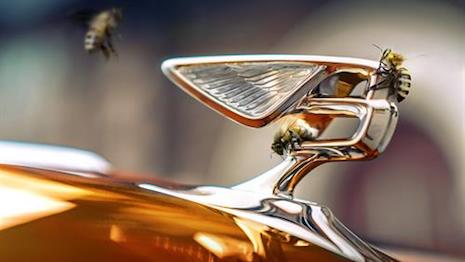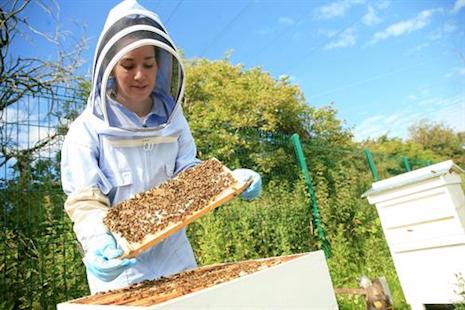 Bentley has added bees to its campus. Image courtesy of Bentley
Bentley has added bees to its campus. Image courtesy of Bentley
British automaker Bentley is making its headquarters in Crewe, England more biodiverse with the introduction of buzz-worthy tenants.
Bentley has brought 120,000 honeybees to grassland at its campus. This ecological initiative follows the installation of a solar-powered carport at the facility, as Bentley strives to make its home greener.
Bee for Bentley
The British Apis Mellifera bees have been introduced to a grassy area at the edge of Bentley’s headquarters, which borders the Cheshire countryside.
Bentley also installed wildflowers in the area, encouraging the bees to pollinate. The bees are expected to produce 50 jars of honey per year.
Each of Bentley's cars includes a “flying B” emblem on the bonnet. The automaker sees this initiative as an ecological reinterpretation of this motif.
Bentley's bees will produce honey. Image courtesy of Bentley
The automaker also recently built the United Kingdom’s largest solar-powered carport.
Bentley's port will be powered by 10,000 solar panels, generating 2.7 MW of power. With the creation of this port, Bentley is significantly increasing its investment in sustainable energy and solar power (see story).
“Although our Pyms Lane site is over 80 years old, we’re constantly looking for ways to improve our environmental footprint and achieve our goal of carbon neutral operations,” said Peter Bosch, member of the board for manufacturing at Bentley, in a statement.
“We already have the largest solar car port in the U.K. on our site – which means that all of our electricity use is now either solar or certified green – so we’ve also started to look at ways we can use our site to increase local biodiversity,” he said. “Bees populations are in decline in the U.K., so installing two hives to help boost biodiversity is a great way to make use of the grassland at the edge of the site.
“Our ‘flying bees’ are honeybees that have been bred by local beekeepers with over 50 years’ experience. With their help, we’re checking on them every week and it’s great to see that they’re already starting to produce the first Bentley honey.”

